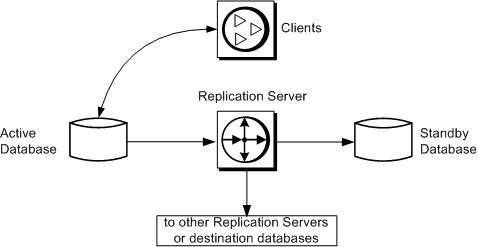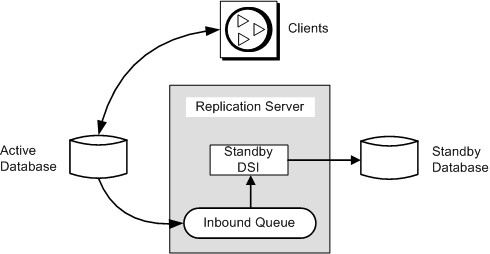Learn how a warm standby works.
This figure illustrates the normal operation of an example warm standby application.
In this warm standby application:
Client applications execute transactions in the active database.
The RepAgent for the active database retrieves transactions from the transaction log and forwards them to Replication Server.
Replication Server executes the transactions in the standby database.
Replication Server may also copy transactions to destination databases and remote Replication Servers.
This figure shows details about the components and processes in a warm standby application.

